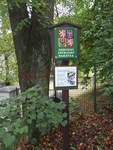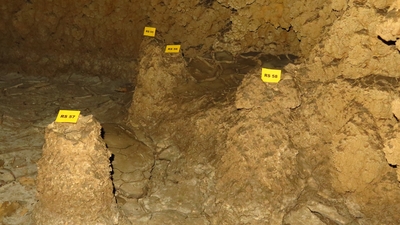Zbrašov Aragonite Caves - Protection and Research

CONSERVATION, RESEARCH AND USE OF THE CAVE
All caves and surface karst phenomena of the Hranice Karst are protected according to Sect. 10 of Act No. 114/1992 Coll., on Nature Conservation and Landscape Protection. In addition to that, some of them are parts of specially protected areas.
The Hranice Abyss and adjacent dolines with valuable botanical communities is situated in the area of Hůrka u Hranic National Nature Reserve, declared in 1952 on an area of 37.45 hectares.
The Zbrašov Aragonite Caves are a part of the Zbrašovské aragonitové jeskyně (Zbrašov Aragonite Caves) National Natural Monument, declared in 2003 and containing the karst slope of the left bank of the Bečva River with the area of 7.74 hectares. Since 1991, the Zbrašov Aragonite Caves are, together with other caves open to the public, in the administration and direct care of the state agency for nature conservation. In compliance with a long-term programme of cave cleaning and particular management plans, various partial purgative actions, which partially returned the cave to its natural state before its opening to the public, were implemented. This purpose was accomplished by a complete reconstruction of the trail combined with consistent sanitation and clearing up of rock stockpiles from previous periods and installation of modern protective equipment. Within a system limiting both the number and frequency of groups of visitors, the caves are now used not only for the public, but also for field trips and research.
The unique cave system is a subject of interest of experts from various branches. The specific cave microclimate is precisely monitored by an up-to-date system of analysers simultaneously in many sites of the cave. Acquired data sets of temperature, humidity, pressure and carbon dioxide concentrations are helpful not only for protection of visitors and employees, but they are also a valuable contribution to scientific knowledge.
The intensive research of formation and development of individual types of hydrothermal sinters, i.e. “doughnut” coatings and especially “geyser” stalagmites, has been going on since 1998. Using special analyses, new facts, which in some cases even refute existing theories, were discovered. An integral part of the research is also the investigation of reasons for the progress and changes in concentration of carbon dioxide. Modern methods are also used for additional specification of occurrence of various minerals, particularly on the aragonite decoration of Opona (Curtain) in Jurikův dóm (Jurik's Dome).
Since 1991, members of the Czech Speleological Society – basic unit 6-23 Aragonit, which has its headquarters there, are engaged in systematic speleological research and extension of inaccessible parts of the caves.
